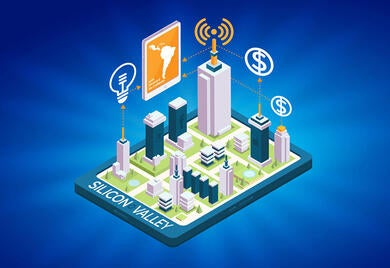Blogs Navigation
Sustainable BusinessRecent posts

Addressing gender-based violence from the private sector: the experience of Laboratorios Bagó
Francisco Méndez, CEO of the pharmaceutical company, shares his company's efforts and achievements in fostering an inclusive and safe work environment.

How Responsible Investments Can Empower Young Women and Girls in Miches While Boosting Tourism
In partnership with Fundación Tropicalia, IDB Invest fosters a more inclusive and sustainable growth path in the Dominican Republic by focusing on their untapped potential.

A Few Very Good Reasons to Protect the Integrity of Gender Bonds
Latin America and the Caribbean has become a leading region in gender bond issuance aimed at bolstering women’s empowerment. These instruments offer a promising capital market solution to mobilize funds towards projects that help accelerate parity.

Untapped Potential: Water, Women and Public-Private Partnerships
More than half century ago, John F. Kennedy said: “Anyone who can solve the problems of water will be worthy of two Nobel prizes — one for peace and one for science.” Today, despite having a third of the world’s freshwater resources, Latin America and the Caribbean is home to 30 million people without access to clean drinking water, and 100 million without safe sanitation. The impressive urban growth in the region during recent years has only exacerbated this problem. Women provide a unique perspective for water management The water availability challenge is already evident in the region — particularly within the poor communities in cities. Women and girls are the most affected in these households, as they are usually in charge of ensuring water provision for their families. For this reason, women can play a key role in the implementation of innovative solutions that are in-tune with the needs and preferences of impoverished communities. This can have a positive impact not only in less favored urban areas, but also in the overall way in which the sector currently operates. There are already cases where women have taken the lead in the management of poor communities’ water systems, and the results have been encouraging. This user-centered approach acknowledges women’s vital role in water provision, and is helpful not only in refining project design and management, but can also increase consumers’ willingness to pay for the service. For utility providers, this can translate into multiple benefits, including improved cash flows, more resources for infrastructure investments, and service quality enhancements. [clickToTweet tweet="Women make up less than 17% of the water and sanitation labor force #NegociosSostenibles" quote="Women make up less than 17% of the water and sanitation labor force" theme="style1"] Women’s participation in the sector does not only bring financial advantages. A Deloitte study shows that when men and women are equally involved in the design and operation of water systems, significant improvements in governance, transparency and sustainability are achieved. For example, in more than 120 water projects that included the participation of women during the design phase, the effectiveness was six to seven times higher than in projects which only included men. Yet, today women make up less than 17% of the water and sanitation labor force, and only a small fraction of management and technical experts. More needs to be done to reduce the gender gap in water provision services, and to ensure that more women have access to key roles — such as engineers, system designers and utility managers. Forging new partnerships in water One way to reduce this gender gap is by identifying partners that can catalyze the financial, technical and social advantages that the participation of women in water projects can bring – and the private sector is particularly well suited for the task. Additionally, promoting private investments in the sector can help tackle another important gap: the investment one. In 2012, only 0.2% of the region’s gross domestic product (GDP) was invested in water and sanitation, compared to 3% in overall infrastructure. Public-private partnerships (PPPs) have traditionally provided much-needed financing, technical know-how transfer and best practices in infrastructure management. While adopting PPP schemes is commonplace in energy and transportation projects, this has not been the case for water. In 2016, out of 96 PPP projects that reached financial closure in Latin America and the Caribbean, only seven were related to water and sanitation. Currently, the region’s public sector continues to hold the lion’s share of water and sanitation services. Nevertheless, many cities have adopted PPP models that work. Cartagena and Bogota contract services to mixed companies, jointly owned by local authorities, a private operator, and local private shareholders. The results have been impressive: between 1994 and 2002, access to clean water and sanitation improved significantly, and more than 80% of new connections were in poor neighborhoods. [clickToTweet tweet="Only 7 out of 96 PPP projects in #Latam and #Caribbean were for water and sanitation in 2016" quote="Only 7 out of 96 PPP projects in Latin America and the Caribbean were for water and sanitation in 2016" theme="style1"] Earlier this year, the Inter-American Development Bank (IDB) Group partnered with the Korean government and the Korea Eximbank to bring best practices in water management technology to Colombia. As part of a knowledge-sharing program, companies from both countries met in Bogota to better understand the operating conditions in that city and to discuss technology transfer plans. Among the conclusions of the meetings, both parts acknowledged the role that the private sector had in improving Bogota´s water operations. As urban demand for water rises across the region, leveraging the untapped potential of both public-private partnerships and women’s participation in water projects will be invaluable. Facilitating access to PPP solutions is one way to do it, like the new single window for PPPs launched earlier this year by the IDB Group. Another way is to have gender-inclusive perspectives at the core of the projects with women playing an active role in the development and implementation of sustainable projects, which is one of our commitments. By implementing this approach, our goal to promote solutions that effectively tackle the region’s water challenges. Subscribe to receive more content like this! [mc4wp_form]

Three ways banks can attract millennials
71% of the millennials in the United States would rather go to the dentist than listen to what banks are saying, according to the Millennial Disruption Index, while 35% of the banks in Latin America feel they are not meeting the needs of this generation, and 71% admit they are unable to rapidly adapt to technological advances, according to a study done by the GMix program of Stanford University and Technisys. However, in upcoming years this age group will be the main source of consumers and labor. Millennials represent close to 30% of the population in Latin America and the Caribbean. For more than half of them, only innovative companies will be successful. In effect, four out of every ten believe that the private sector is the true driver of innovation, according to a survey conducted by Deloitte. For this reason, banks in the region are looking for new formulas to attract them: 1. Chile: Collaborative spaces The millennials are the “BRICs” of the age groups: due to their size, they can disrupt the economy, particularly the banking industry, according to Scratch. In Chile, banks are betting on collaborative spaces to approach this generation. Thus, was born Work/Café, a space open to the general public for working, holding meetings, and using free Wi-Fi and that already has six locations in the country. The Santander Group’s wager includes a cafeteria with discounts for clients, executives specializing in financial advice, and ATMs for cashing checks, making deposits, and transferring funds. Another characteristic sought by millennials is flexibility. Thus, these branches add four hours to traditional banking hours in Chile, remaining open for 18 hours, Monday through Thursday. Work/Café also gives talks in order to keep capturing clients constantly. [clickToTweet tweet="35% of the banks in #Latam feel they are not meeting the needs of the millennials" quote="35% of the banks in Latin America feel they are not meeting the needs of the millennials" theme="style1"] 2. Brazil: 100% virtual In Latin America and the Caribbean, 55% of the population buys products via the Internet and 90% of millennials are digital banking clients. For this reason, a Brazilian bank made the decision to be the first 100% digital bank. Banco Original developed a website, applications for mobile telephones, tablets, and even Smart TVs to reach its public on line and close its branches. To avoid in-person visits, this Brazilian bank developed a site with services for personal, commercial, and agribusiness banking. In addition, it developed Bot Original, a service enabling interactions via Messenger and even on Facebook, with a robotic system of instantaneous responses for clients. 3. Mexico: On-line support for SMEs One of the region’s largest financing gaps is experienced by small and medium enterprises (SMEs); this gap is estimated at between $210 billion and $250 billion. However, for more than half of the region’s millennials, a venture is one of the most important achievements. Thus, the banking system is seeking ways to facilitate access to financing for SMEs given that applications for financing for companies of this type still require in-person visits in many countries. Bankaool, Mexico’s first 100% on-line bank, developed financing tools for SMEs. Clients can apply for and receive financing for their businesses in a more streamlined and expeditious way. This has also allowed the bank to carve out a niche within the financial industry based on its work generating inclusive businesses. Innovative wagers continue to flourish in the region and in the rest of the world, from applications for different financial operations and the use of biometric profiles, to the development of products for women’s banking. They all seek a positive effect on returns, efficiency, and the consumer’s experience. It is thus essential to continue looking for strategies that make attracting millennials possible since, as John D. Wright once said, “Business is like riding a bicycle. Either you keep moving or you fall down.” Now we need to see what the banking sector’s next move will be in the region. Subscribe to receive more content like this! [mc4wp_form]

Four challenges facing the buildings of the future
In the 1960s, the Jetsons showed us a futuristic city in which pollution and the use of non-renewable resources did not exist. Twenty years later, when we had already begun to hear about environmental problems, Blade Runner showed us a more pessimistic vision of 2019: a city with countless skyscrapers, over-population, and extremely high pollution levels. Today we already have much of the Jetson’s smart technology, but sustainable buildings are needed to avoid Ridley Scott’s dystopian city. In 2016, the New Climate Economy determined that the only way to grow in the future and address the current gap is with sustainable infrastructure. According to the Inter-American Development Bank (IDB) and Mercer study “Crossing the Bridge to Sustainable Infrastructure Investing. Exploring Ways to Make it Across,” the ability to develop buildings of this kind depends on overcoming at least four key challenges: 1. Lack of familiarity What is sustainable infrastructure? Many investors still lack the information they need to clearly identify what it is and what it is not, and to identify the nature of the business opportunity. This makes it difficult to increase this type of construction. Sustainable infrastructure is planned, constructed, and operated to comply with changing governance, social, environmental, economic, and financial standards over time. For this reason, the role of multilateral and governmental organizations is to educate, inform, and provide appropriate financial products, in order to adapt current businesses to a climate change resilient economy with low carbon emissions. 2. Limited standardization of tools and approaches As this is a megatrend in full swing, there is excessive fragmentation in sustainability standards, principles, and initiatives. In addition, there is a lack of adequate information available on what the environmental, social, and governance criteria are for companies not listed in their respective securities markets, making it difficult for investors to identify which projects are sustainable. In addition, the lack of information increases transaction costs. For this reason, the IDB Group is developing and promoting the adoption of harmonized principles and working with investors to facilitate discussions regarding currently existing barriers to sustainable infrastructure. The objective is to generate useful solutions with innovative financial instruments in local markets and public-private partnerships and concessions that facilitate private sector participation. [clickToTweet tweet="US$6 trillion investment in sustainable infrastructure per year requires #Latam and the #Caribbean" quote="US$6 trillion investment in sustainable infrastructure per year requires Latin America and the Caribbean" theme="style1"] 3. Lack of coordinated policy Another fundamental point is to have consistent regulations and a commitment to comply with them throughout the region and in all sectors. Following guidelines like the Paris Agreement and the United Nations Sustainable Development Goals is key to maintaining investors’ interest in measures such as the adoption of clean energy. For Latin America and the Caribbean, it is essential to adopt instruments adapted to our reality. In this case, the IDB Group’s NDC Invest is a solution enabling countries to implement these guidelines through a simple platform for preparing sustainable and bankable project portfolios, and increasing access to concessional funds, among other benefits. 4. Lack of tools and focus on climate resilience To date, priority has not been given to how climate change adaptation should be achieved, both in terms of infrastructure and the financial tools for investing in it. However, today there are various financial tools for adapting to climate change. For example, IDB Invest (formerly known as Inter-American Investment Corporation) has mixed climate financing instruments that can be used to address these challenges and adopt climate change resilient modalities with low carbon emissions. Developing the construction of the future requires investing at least US$6 trillion per year in sustainable infrastructure for our region. This will make it possible to support the economic development of Latin America and the Caribbean, grow at the necessary pace, and prevent our cities from becoming futuristic dystopias. Subscribe to receive more content like this! [mc4wp_form]

Blockchain: Democratizing finance
Fourteen million small agricultural producers in Latin America and the Caribbean are exposed to climate change with repercussions on land quality and yield. These producers have very limited ability to access financial services such as agricultural insurance. Less than 20% of local banks serve agribusiness, due to the high costs and the difficulty of assessing credit risk or damages in the case of insurance. The revolution in financial inclusion has the shape of blocks This situation is changing through the introduction of Blockchain in financial services. Blockchain is a technology to carry out financial transactions securely, transparently, and reliably between two separate users, whether banks or individuals, without using an intermediary, so that costs can be reduced. Blockchain technology uses a distributed database that saves blocks of information and links them to facilitate information retrieval and verify that the blocks have not been altered. In the case of agricultural insurance, Blockchain makes possible the use of smart contracts between the farmer and a financial institution, using reliable information based on weather data. One of the advantages is the automatic execution of the contract that relies on predefined conditions without requiring human interpretation. For example, a compensation is paid when a defined quantity of rain is exceeded, causing production losses. Another advantage is that with this model, insurance can be accessible in terms of costs ($2 to $3 per month) and in terms of geographic coverage, which is not feasible with the traditional insurance model. [clickToTweet tweet="Some banks stated that Blockchain-based commercial services will operate before the end of 2017" quote="Some banks stated that Blockchain-based commercial services will operate before the end of 2017." theme="style1"] There are already start-ups developing products that increase financial inclusion using Blockchain technology, such as the Etherisc company with crop insurance. Other applications cover remittances’ transfers, identity and background check systems, clearing and settlement in payment systems, credit history, property registration, and land tenure. The rules of the game are changing for financial institutions With the availability of Blockchain, banks can increase their client base, geographic coverage, and the financial products they offer while reducing operating costs. In an IBM survey, 17% of the banks interviewed stated that Blockchain-based commercial services will begin to operate at commercial scale before the end of 2017. Ignoring this wave of innovation not only means losing an opportunity to contribute to financial inclusion in our region, it also means running the risk of not being competitive and being left out of the market with little notice. Subscribe to receive more content like this! [mc4wp_form]

What can Messi, Neymar and Suarez tell us about banks and fintech companies?
On May 26, 2013, a tweet from FC Barcelona confirmed that the 21-year-old Brazilian striker Neymar Jr. had accepted a multi-million dollar contract to join five-time Ballon d’Or winner Lionel Messi in the Catalonian soccer team. Fourteen months later, the same club hired the Uruguayan star Luis Suarez. A couple of weeks later, Barcelona’s legendary player Johan Cruyff suggested that the new hiring could ruin the team: “The three of them are too individual; I can't see how Barça intends to continue playing…” Fintech firms, the emerging financial service sector of the 21st century, are flourishing across Latin America and the Caribbean with no exception. The Inter-American Development Bank and Finnovista have identified more than 700 Fintech firms in 15 out of 18 countries in the region. Bullish observers believe the emergence of Fintech companies represent the end of traditional banks; the skepticals claim Fintech firms are not meant to last. Though it is difficult to anticipate how tech innovation will shape financial intermediation in the future, market participants have more to win in a collaborative “ecosystem”, rather than playing a zero-sum game. Business opportunities are huge for all participants and every player has something to bring to the table. The field for FIs and Fintech firms in the region Credit still represents, on average, less than 45% of the gross domestic product (GDP) in Latin American and Caribbean countries, well below the average 150% in developed countries. For example, in Argentina, one of the richest countries in the region, credit represents less than 15% of GDP. On top of this, half of the adults in the region do not have a banking account and, in some countries, such as Nicaragua or Peru, this ratio hits three out of four citizens. Cash continues to be the most used mean of payment in the region with 90% of utilities paid in cash, according to some studies. [clickToTweet tweet="Credit represents less than 45% of the GDP in #Latam and #Caribbean countries" quote="Credit represents less than 45% of the GDP in Latin American and Caribbean countries" theme="style1"] However, the region benefits from a huge advantage: technology adoption is incredibly fast. Mobile penetration reaches 70% of the population, comparing relatively well with the 84% enjoyed by Europe, the world’s most developed continent mobile-wise, according to GSMA. On top of this, Latin America is expected to be the second fastest growing mobile market in the next five years, setting the perfect platform for fintech companies’ growth. Fintech firms’ biggest assets are their accessibility through digital and mobile channels, their agility and velocity to adjust to a changing environment, and their capacity to maximize the customer experience. According to Capgemini, almost 70% of costumers would refer their fintech service provider to a friend, but roughly 45% to their bank. On the contrary, though the gap is closing, traditional banks take the lead when talking about trust. 60% of consumers completely trust their banks, no matter the quality of the service, indicates the study. In the same line of thinking, although fintech companies are gradually diversifying their funding sources, banks have a wider reach in terms of access to capital and cheap and stable retail deposits. And banks also benefit from the regulators’ blessing. A new game strategy for Latin America and the Caribbean At the Inter-American Development Bank Group (IDB Group), we believe collaboration should be the rule and not the exception. That’s why, in the context of the 2017 Mobile World Congress, we launched FINCONECTA, a 10-month program dedicated to create the first interconnected ecosystem of solutions between financial institutions and leading fintech firms to foster the exponential growth of the financial industry. The results will be announced in the FOROMIC 2017, to be held at the end of October in Buenos Aires. [clickToTweet tweet="1 out of 3 #banks operating in #Latam are already partnering with #fintech companies" quote="One out of three banks operating in Latin America are already partnering with fintech companies" theme="style1"] “Messi knows that the players around him make him a better player, and he makes his mates better too,” affirmed former Barça’s head coach Luis Enrique in an interview. In the last three seasons, Messi, Neymar, and Suarez have scored more than 300 goals by playing together. According to a study conducted by PWC, one out of three banks operating in Latin America are already partnering with fintech companies, and more than 80% expect to be doing business together in the next three to five years. The ball is rolling. It’s time to let banks and fintech firms play together and consumers will be as happy as Barcelona’s fans. You can also see more on the impact of the fintech revolution in Latin America and the Caribbean on this full report. Subscribe to receive more content like this! [mc4wp_form]

What can Latin America and the Caribbean learn from Silicon Valley
In 1984, Steve Jobs launched the first Mac. The classic film “Revenge of the Nerds” was released the same year. At the time, computers and nerds went hand in hand. During my adolescence, the impression of what seemed to be happening in Silicon Valley was “not cool.” In recent decades, the area that stretches to the south of San Francisco has become the undisputed pole of innovation worldwide. Many countries have tried to develop their own versions of Silicon Valley, but for most of them this is an elusive goal. Silicon Valley is a unique ecosystem, thanks to the clustering of the top technology companies, universities closely linked to the subject, innovation laboratories, and a very extensive private equity industry. But what really makes this valley unique is its entrepreneurial culture. They take risks, learn from their failures, and always think big: growing 10 times and not by 10%. In his recent annual letter to Amazon’s shareholders, Jeff Bezos emphasizes the importance of having an obsessive customer focus. Bezos explains how machine learning and artificial intelligence impact almost all areas of his company. Above all, he highlights the enormous risk of becoming irrelevant if they get stuck on internal processes, if they don’t make quick decisions, and they don’t adapt to major trends. In summary, the letter is a manifesto to the Silicon Valley culture, an exponential vision of the future. The Silicon Valley recipe: New business models Last June, the directors of the Inter-American Development Bank (IDB) and the staff of IDB Invest (formerly known as Inter-American Investment Corporation) spent three days in Silicon Valley, for their first joint trip. The intense agenda included several of the most emblematic technology companies, incubators, accelerators, risk equity funds, and think tanks. Some of the most mentioned technologies were the Internet of Things, artificial intelligence, blockchain, robotics, 3D printing, virtual reality, and augmented reality. However, beyond its inventions, Silicon Valley is well-known for mainstreaming new business models. In many cases, these models have changed complete paradigms, such as the economy “uberization” and the crowdfunding. Ultimately, Silicon Valley is the window from which we glimpse the changes that will impact all areas of our lives, from our work, home, cities, and transportation to our finances, health, education, and entertainment. Computer processing costs continue to fall, so we should expect disruptive changes in every industry exposed to technology. This means nearly all industries! Silicon Valley's key for Latin America and the Caribbean Upon our return, we had many questions about Latin America and the role of development banking: What are the major development challenges emerging from these technological changes? How can we prepare to buffer the imminent impact that the most vulnerable will suffer? What kind of knowledge should we generate and how should we disseminate it? How can we ensure that regulations and laws (that by nature move more slowly than technology) favor innovation, efficiency, and inclusion? How can we deepen support for the Latin American entrepreneur? In the ICT (Information and Communications Technology) industry it is essential to support, in public and private spheres, investments in broadband in a region that has consistently under-invested in infrastructure. Mobile broadband is the great facilitator of the technology ecosystem and the great democratizer of the twenty-first century. Networks must be ubiquitous and costs need to be accessible. It is important to promote competition and entrepreneurship, and prevent market concentration. During 2017, IDB Invest has contributed to this goal/effort with loans to Telecom Personal in Argentina and to Tigo in Paraguay. Despite this, development banking must be more ambitious. In a world that is accelerating at great speed, banking must lead by looking forward and not in the rear-view mirror. The recipes from the past do not work when we are facing paradigm changes. The quantity of data circulating on the Internet doubles every year and a half. Currently, more content and information is generated per day than what was generated in entire centuries during the pre-digital age. Using landline phones, we took more than 100 years to connect all households. With cell phones, we connected nearly everyone in less than 20 years. And now, Dell, IDC, and others expect that by 2020 there will be between 30 billion and 50 billion objects connected to the Internet, helping in turn to provide feedback for machine learning and artificial intelligence. Much has changed since the release of “Revenge of the Nerds.” Now, in Silicon Valley, nerds are cool: they work in jeans and sandals, get around on skates and colored bicycles, they relax on beanbags, and are offered free meals, 24/7. In many cases, their bank accounts feature a lot of zeros, which is not surprising since the five companies with the greatest market capitalization in the world are Apple, Alphabet, Microsoft, Amazon, and Facebook. The nerds have in fact had their revenge! Subscribe to receive more content like this! [mc4wp_form]


